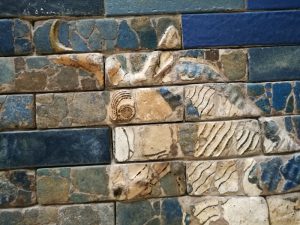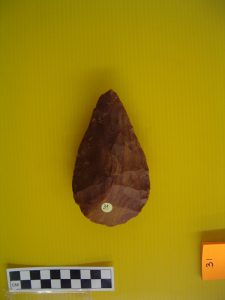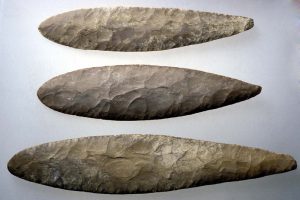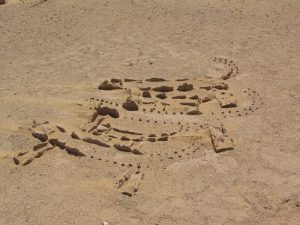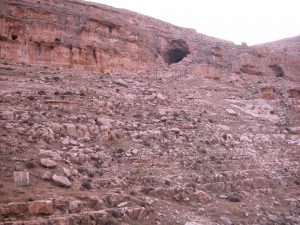All 176 artifact photos are available on request –
Location – Coordinates 33o25″N and 7o40″W (Howell and Clark 1963). Grotte des Ours (“The Cave of the Bears”, named for its many bear fossil remains) is a part of a large complex of karstic caves that occur in the sandstone and limestone of the Amirien Formation. These were exposed during work at the Sidi Abderrahman Quarry (Fig. A6).
History of Research – P. Biberson discovered the site in 1952 and excavated it in the following year.
Excavated Area – 90 m2 (Biberson 1961).
Stratigraphy – Three archaeological layers were identified in the cave, situated in the lower part of the main Sidi Abderrahman general section (Fig. A7). The archaeological layers correspond to the three stages of rise in sea level during the Anfatienne Phase (Biberson terminology). The layers were designated (from bottom to top) G0, G1 and G2. The richest in fauna and artifacts was G0 (Fig. A7). G2 was very poor in finds, with most of the artifacts emerging from the inner part of the cave. Evidence of knapping, as well as of bone and meat processing, was found. Biberson has the preference of this part of the cave was due to its greater proximity closer to a freshwater spring as well as to quartzite cobbles, a major source of raw material. An alternate explanation for the richness of the inner part of the cave is that a flood possibly shifted artifacts from their in-situ position during an elevation in sea level in the climatic stage following their deposition, also causing some tool loss.
Environment and Fauna – Many bear bones were found, two of which were identified as bone tools.
Date – The estimated date for Grotte des Ours is ca. 0.4 mya (Raynal et al. 2001, Table 5), based on bio-chronology and typological considerations.
The Lithic Assemblage
Raw materials – All of the LCTs at Grotte des Ours are made of quartzite. It would seem that this raw material was available in the vicinity of the site in the shape of large rounded cobbles (Biberson 1961). However, no detailed description is available.
